#1976 Italian Grand Prix
Text
The History of...The Japan GP
Hello and welcome to the first post of formula 101's new segment...the history of, starting with this Weekend's GP "The Japanese Grand prix"
Historically, Japan has always been one of the last races of the season and thus has been a GP for many title-deciding races. with 12 driver's champions being crowned on Japanese soil. In fact the Japanese Grand prix was also the only Asian nation to host a formula 1 race until 1999 when Malaysia joined, but just because it's 1 GP doesn't mean its always been held in one place.
The first two Formula One Japanese Grands Prix's (in 1976 and 1977) were held at the Fuji Speedway, located at the foothills of Mount Fuji, in Oyama, Suntō District, Shizuoka Prefecture, Japan. It was built in the early 1960s and in the 1980's was used for the FIA World Sportscar Championship and national racing. The track itself was originally managed by Mitsubishi Estate Co, however it was acquired by Toyota Motor Corporation in the year 2000
The Fuji Speedway also happens to be home to one of Formula 1's greatest moment in 1976 (the first Japanese GP) where the race was run under some terrible wet conditions and Driver James Hunt finished third and was crowned world champion over his title rival Niki Lauda, who refused to risk his life in the treacherous conditions.
The Japanese GP was unfortunately then taken off the calendar but it returned in 1987 at Suzuka, which stands to be one of the most challenging Formula One circuits due to its unique ‘figure of 8’ layout, which includes the 130R corner! which also happens to be the place where the second major event that took place at a Japanese grand prix, and that was in the 1988 race...

(Image: Track Layout of Suzuka)
The World Championship decider between Senna and Prost – who were McLaren teammates that year. Senna came in with a greater chance of winning the championship (as the points system in those days counted the best 11 results; Senna had retired from one more Grand Prix than Prost had and had been slightly less consistent than the Frenchman, yet this was actually to the Brazilian's advantage; the way the points system worked in those days meant that there was more room for him to score points.) McLaren also had obtained superior and fuel-efficient Honda engines from Williams and had a car far better than any of the others, plus had won every race of the season except the Italian Grand Prix – McLaren's only double retirement of the season.
At the start, Senna made a very bad start, stalling on the grid but then managing to bump-start his car. However because of this, he dropped to 14th, while Prost took the lead. It then began to rain, and Senna (being a wet weather specialist) stormed around the track, setting a number of fastest laps and passing car after car until he caught Berger in 2nd and then started to catch Prost rapidly. The Frenchman's gearbox was malfunctioning, and the Brazilian caught and passed Prost while the Frenchman was delayed by consistent backmarker Andrea de Cesaris. Senna won the race and his first Drivers' Championship with Prost finishing 2nd, despite the latter scoring more points overall.
However this is not the only iconic moment between Senna and Prost at the Japanese GP as in 1989 the 2 teammates got into an even more heated GP, but in order to give that story justice I'll just make another post on it (coming soon)
In 1994 and 1995, Japan also hosted the Pacific Grand Prix at the TI Circuit, making Japan one of only nine countries to host more than one Grand Prix in the same season (the others being Austria, Bahrain, France, Germany, Great Britain, Italy, Spain and the USA) and the only Asian country on the list
In 2007 the Grand Prix moved back to the newly redesigned Fuji Speedway and after a second race at Fuji in 2008, the race returned to Suzuka in 2009, as part of an alternating agreement between the owners of Fuji Speedway and Suzuka Circuit, rivals Toyota and Honda. However, in July 2009, Toyota announced it would not host the race at Fuji Speedway in 2010 and beyond due to "a downturn in the global economy", and so the Japanese Grand Prix was held at Suzuka instead. Suzuka has hosted the Japanese Grand Prix every year since 2009, apart from in 2020 and 2021 when the Grands Prix were cancelled due to the COVID-19 pandemic.
The Grand prix has been confirmed to stay on the calendar till 2024 where it will be from the 5th to the 7th of April, making it one of the first Grand Prix's unlike its usual record. Overall the Grand prix is a special one, holding many '1st's' of Formula 1 and the fact that it's a track in an asian ground in a very European dominated sport.
Most wins (Driver) at the Japanese GP: Michael Schumacher (6)
Most wins (constructers) at the Japanese GP: Mclaren

signing off,
~writer girl
#f1#formula one#charles leclerc#max verstappen#alex albon#carlos sainz#danielricciardo#estaban ocon#lando norris#pierre gasly#japanese grand prix 2023#japan gp 2023#formula 1#suzuka 2023#singapore grand prix
17 notes
·
View notes
Text


Happy birthday RENÉ ARNOUX!!!!!!!!!!!!!!! (04/07/1948) 💛⚡
René Alexandre Arnoux was born in Pontcharra (Isère), in a family from a poor backgroud, at a young age he moved to Moncalieri (Italy), where he later would start working as a mechanic and used to polish engine cylinder heads (he would later state that this experience helped him in the following years to develop the cars that he raced in); in those years René got interested in racing, and started competing in karting races in Italy.
In 1972 he took the occasion to sign up to the ELF driving school, which the following year would help him to enter the French and European Formula Renault championships. The talented French driver shone immediately by winning both championships in his inaugural year of racing, and of course all the success gained, caught the eye of many racing teams, but René was very hesitant to enter 'officially' the world of motorsport, and considered racing no more than just an hobby; it took a second round in the Formula Reanualt in 1975 (that he won again), to actually convince him to make the big step and join Formula Two. In 1976 he joined Formula Two, where he won three races but ended up narrowly losing the title to, fellow French driver, Jean-Pierre Jabouille; but in 1977 he managed to win the championship.
That was the step that led him to his debut in Formula 1 at the '78 South African grand prix, racing for the Martini team, with whom wasn't able to demonstrate his racing abilities: the team could not afford to race in Formula 1, and would later abandon the sport in the middle of the season, having run out of money. René found himself racing for the Surtees racing team, that unfortunately, was at the edge of failure. Even though Renè thought that his Formula 1 experience ended at the end of '78, his old rival, and friend, Jean-Pierre Jabouille, remembered his worth. In 1979 Renè joined Jean-Pierre in the Renault team, which was the first team to race with turbo charged engines. The following years in Renault were characterised by the unrelieability of the turbo engines and later by the arrival of the young Alain Prost, with whom he didn't get along too well. In 1983 he would join Ferrari with whom spent two difficult years, that ended with him being fired by the Italian team after only one gran prix in 1985; he would spend the rest of the year without a seat and looking for a contract. In 1986 he came back to Formula 1 racing for Ligier and stayed with the team until 1989, before retiring from the sport.
After retiring from F1, René started an indoor karting business and still to this day manages two factories.
Among motorsport fans he's mainly remembered for the intense and thrilling, but fair, battle between him and the French-Canadian Gilles Villeneuve, at Dijon in 1979; both regarded the battle as one of their highest moments of their careers.
By many, he's considered one of the best drivers of the sport, but that unfortunately never really had the chance to demonstrate his true talent, but for sure René left an indelible mark in the sport's history.
#happy bdaaaaaay bby!!!!!#rene arnoux#classic f1#f1#formula 1#retro f1#f1 1970s#f1 1980s#unfortunately there weren't as many informations as I hoped ugh#not even on the french wiki lmao#f1_bdays
31 notes
·
View notes
Text
Top Favorite Car Racing Movies
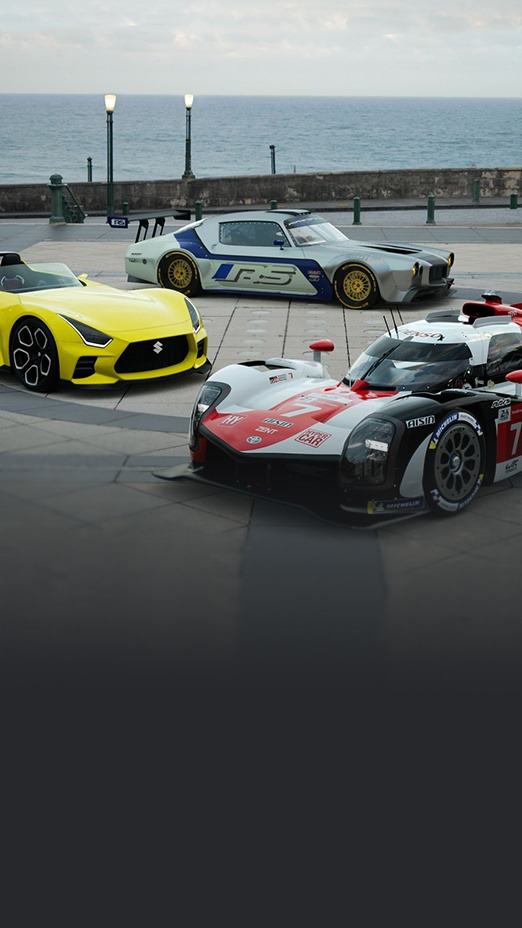
Due to the upcoming release of "GRAN TURISMO", I had decided to list my current favorite movies about car racing:
TOP FAVORITE CAR RACING MOVIES
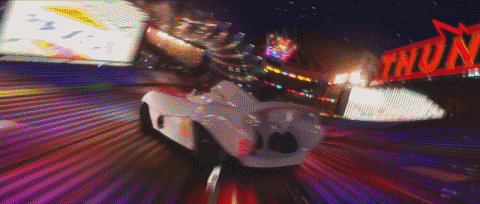
"Speed Racer" (2008) - The Wachowskis wrote and directed this exciting and very original adaptation of Tatsuo Yoshida's late 1960s Manga animated series about a young American race car driver. Emile Hirsch, Christina Ricci and Matthew Fox starred.
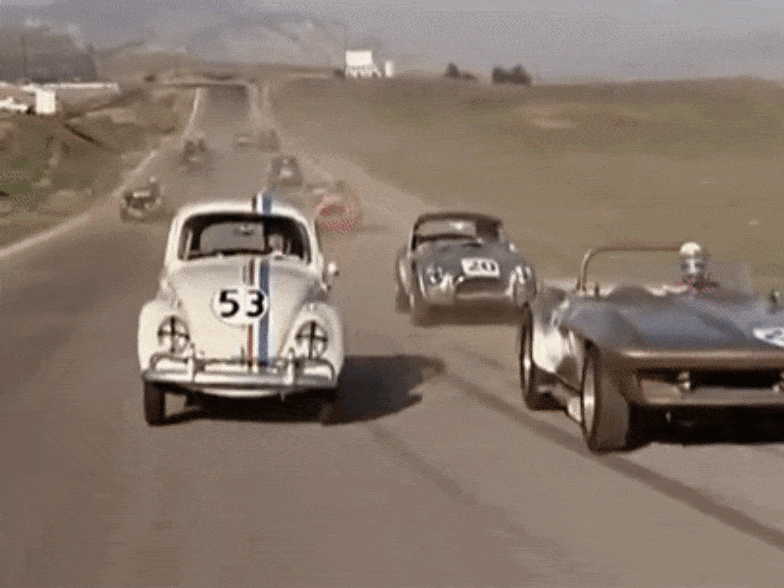
2. "The Love Bug" (1968) - Robert Stevenson directed this funny and first-rate adaptation of "Car, Boy, Girl", Gordon Buford's novel about a sentient Volkswagen Beetle named Herbie and his relationship with his driver, Jim Douglas. Dean Jones, Michele Lee, Buddy Hackett and David Tomlinson starred.

3. "Those Daring Young Men in Their Jaunty Jalopies aka Monte Carlo or Bust" (1969) - Ken Annakin directed and co-wrote this all-star comedy about the European car rally , the Monte Carlo Rally. Tony Curtis, Susan Hampshire and Terry-Thomas starred.
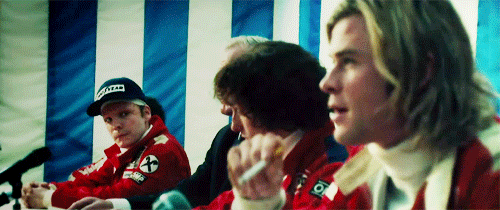
4. "Rush" (2013) - Chris Hemsworth and Daniel Brühl starred in this biopic about the rivalry between two drivers, the Briton James Hunt and the Austrian Niki Lauda, during the 1976 Formula One motor-racing season. Ron Howard directed.
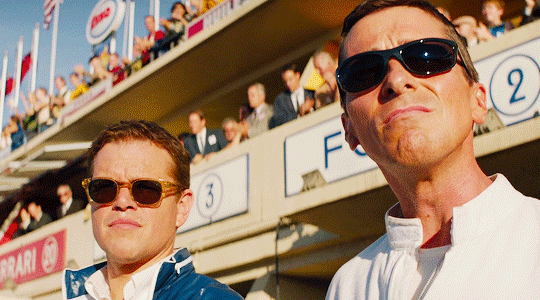
5. "Ford v Ferrari" (2019) - James Mangold directed this biopic about automobile designer Carroll Shelby and racer Ken Miles, who were hired by the Ford Motor Company to lead a team to build a race car that would defeat the perennially dominant Italian racing team Scuderia Ferrari at the 1966 24 Hours of Le Mans race in France. Matt Damon and Christian Bale.
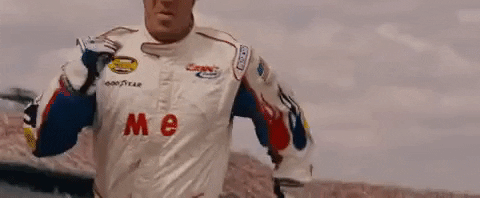
6. "Talladega Nights: The Ballad of Ricky Bobby" (2006) - Adam McKay wrote and directed this sports comedy about an immature yet successful NASCAR driver. Will Farrell starred.

7. "The Great Race" (1965) - Blake Edwards directed and co-wrote this comedic and fictionalized account of the 1908 New York to Paris Race. Tony Curtis, Jack Lemmon and Natalie Wood starred.

8. "Grand Prix" (1966) - John Frankenheimer directed this story about the fate of four Formula One drivers through a fictionalized version of the 1966 Formula One season. James Garner, Eva Marie Saint and Yves Montand starred.

9. "Viva Las Vegas" (1964) - Elvis Presley and Ann-Margaret starred in this musical comedy about a romance between a race car driver competing in Las Vegas' first annual Grand Prix race and a hotel swimming instructor. George Sidney directed.

10. "Cars" (2006) - John Lasseter directed and co-wrote this Disney animated film about a hotshot rookie race car named Lightning McQueen who gets stranded in Radiator Springs, a rundown town that is past its glory days. Owen Wilson starred.

#speed racer#the great race#the love bug#grand prix 1966#rush 2013#ford v ferrari#tallageda nights#those daring young men in their jaunty jalopies#monte carlo or bust#cars 2006#pixar#viva las vegas#the wachowskis#blake edwards#robert stevenson#john frankenheimer#ron howard#james mangold#adam mckay#ken annakin#john lasseter#george sidney#emile hirsch#christina ricci#matthew fox#tony curtis#natalie wood#jack lemmon#dean jones#michele lee
6 notes
·
View notes
Text
Life In The Fast Lane - Prologue
Rating: Teen & Up
Warnings: None apply
Pairings: Original Female Character(s)/Original Male Character(s); OFCs & OMCs
Work Tags: Re-write of a previous work; Mentions of IRL current and past F1 figures; Eventual romance; friends to lovers; found family/work family; actual family; racing drivers and their various shenanigans; how to handle pressure (and how not to); with a sprinkling of the power of friendship; tags will be updated as work progresses
Word count: 802
One
The Guardian – 8th January 2016
Motorsport pioneer Maria Teresa de Filipps, the first female Formula One driver, has died aged 89.
The Italian driver, from Lombardy, participated in five Grand Prix across 1958 and 1959, making her debut at the 1958 Monaco Grand Prix in a privateer Maserati. Across her three Grand Prix starts, her highest placing was tenth at the Belgian Grand Prix that same year, though she failed to score any points.
de Filipps was appointed Vice President of the Club of Former Grand Prix Drivers in 1997, and in 2004 founded the Maserati Club, later becoming its Chairperson.
Two
F1 Weekly Newsletter
This week on our dive into the F1 archives, we’re putting the 1975 Spanish Grand Prix under the microscope.
Contested at the Montjuïc Street Circuit in Barcelona, you may know that it was won by Jochen Mass, with Jacky Ickx and Carlos Reutemann rounding out the top three… but today we’re focusing on the driver who finished in sixth place.
Italian driver, and more notably the second female driver to compete in Formula 1, Lella Lombardi.
Lombardi is still to this day the most successful female driver in Grand Prix history, having scored just half a point at the 1975 Spanish GP, as the race was red flagged after 29 laps. Her career spanned 12 races across 17 entries, driving for March, RAM, and Williams. Her last race was the 1976 Austrian Grand Prix, where she finished twelfth.
Three
17th October 1989 – The Sword and Lion, Oxford
“Okay and last question for the sports round,” A hushed washed over the pub, as the groups sat round almost every table leaned back in their seats to try and hear better. “Who is the only British female Formula One driver?”
The hush was replaced by a sea of confused murmurs.
“A female F1 driver?” One patron exclaimed in complete disbelief.
“There’s never been a woman in F1 it’s a trick question!” Another huffed with their arms folded across their chest.
“The answer, was Divina Galica. She took part in three race weekends, the 1976 British Grand Prix and the Argentine and Brazilian Grand Prix in 1978, though she never qualified for those races. She also competed in four Winter Olympics as a skier”
Four
7th April 2010 – Brands Hatch Circuit
Rain came pouring down at the race track on a very cold, grey Spring day. It was the middle of the week, so the circuit sat empty, bar a handful of people in offices in the main pit building doing paperwork.
The Desiré Wilson grandstand sat right at the end of the start/finish straight, looking across Paddock Hill. As it got pelted with rain some looked out of their windows at the grandstand, and let out a small sigh before continuing on with their work.
Better known for her career in sportscar racing than her one race entry at the 1980 British Grand Prix, Desiré Wilson had won the race at Brands Hatch in the 1980 British Formula One championship. While completely separate from the series it was named after, it was still an astounding enough achievement that merited a grandstand being named in her honour.
Rain continued to fall for the rest of the day, and as the last of the office staff left, the grandstand stayed where it always had been, looking out over the circuit.
Five
BBC Sport F1 Column
The fifth and still final female driver to compete in Formula 1 was Italian racer Giovanna Amati. She signed with Brabham for the 1992 season, alongside Eric van der Poele from Belgium.
She first drove an F1 car the year prior, driving 30 laps in a Benetton at a private test, prior to signing with Brabham. Amati became the first female driver in twelve years to take part in a Grand Prix weekend at the first race of the season in South Africa.
Her career was sadly short lived, as she failed to qualify in the first three races of the 1992 season, which resulted in Brabham replacing her with Damon Hill, who also failed to qualify in the next five races.
Amati had a brief spell in sportscar racing, before her retirement. She briefly worked as a television commentator and wrote columns for various Italian motorsport publications.
It would be another 24 years before Formula 1 would see another female driver compete in a Grand Prix weekend, when British driver Susie Wolff drove in first practice for Williams at the 2014 British Grand Prix (she went on to drive in three more practice sessions before announcing her retirement from racing).
This weekend sees the driver-less streak broken again as Amy McDonald will drive for Renault in the first practice session at this week’s Spanish Grand Prix in Valencia.
It is unclear if or even when Formula One will see a female driver permanently racing in the sport. Attitudes towards female drivers have come a long way thanks to the likes of W Series, and Formula 1’s own feeder series F1 Academy, though many questions still remain at just how competitive a female Formula 1 driver could be, if one was ever given the chance.
3 notes
·
View notes
Text
My favourite quotes/quotes I found interesting from Niki Lauda - The Art and Technicalities of Grand Prix Driving:
"Völker: Nightmare days of crashes like 1975 Barcelona Grand Prix or the 1976 Nürburgring, when you nearly lost your life, must surely leave a scar on your mind that's so deep that you can't stop thinking about it for a long time afterwards?
Lauda: It shakes me up, it does affect me, but it doesn't unbalance me. I can't allow it to overwhelm me, just as I must not be afraid or worry about it.
Völker: But no man can control his emotions like fear, can he?
Lauda: It's just a matter of will-power. You've got to develop a strong will and stubborn head, as well.
Völker: this stubbornness - does one have it, or does it have to be developed first?
Lauda: You've got it already and you can cultivate it. I can be insanely obstinate and immense egoist as well." - page 15
-
"Völker: Don't you need to do a kind of mental gymnastics to keep such 'evil thoughts' at bay?
Lauda: No. You learn to switch off. I throw a switch in my brain, then I'm a racing driver and nothing else. A racing driver without feelings and hence without fear. Then you drive, and nothing 'occurs' to you. The big problem comes in finding how long it takes to switch back on again - in other words to change back from racing driver to human being again.
Völker: how long does it take you?
Lauda: Relatively little time compared to other drivers. But things do happen that I wouldn't normally do. You meet people over-taunt from the atmosphere of the race, and you don't easily see eye to eye with them. For instance, there was this track official in Canada who panicked when I flew off the track and just kept shouting 'master-switch'. He wanted me to switch off the master switch. I had everything under control, and I told him quite calmly I just wanted to get my helmet off first. At that, the man went off his rocker, grabbed at the car and of course, switched on the fire-extinguisher instead, and that went off. I was so bloody mad I thumped the man with my crash helmet - something I'd never normally so and I'm deeply sorry to have done, but my own mental switch was still pointing 'racing' and not to 'Niki'. Or after the Argentinian Grand Prix: I'm coming out of the drivers quarters with Mariella, and somebody pulls me round and shouts: 'Photo' so I jumped on him as well." - page 18
-
"Völker: Even so you're in the nation's showcase and you must have some influence on your admirers. Do you act accordingly?
Lauda: I try to behave decently. It's easy enough for me as I was well brought up and I'm used to good manners. I won't attract attention by rowdy behaviour or drunknness because I would never behave rowdily and I hardly touch alcohol. And if the journalists go wild because I kiss Princess Grace's hand all I can say is: I thought nothing of it, it struck me as perfectly normal to kiss her hand as that's the way I have been taught." - page 19
-
"Lauda: Monte Carlo is the worst. After the race you get claustrophobic. We had a steel rail left and right of our pits, holding back thousands of Italians whose only desire was to shake my hand, hug me, or pull me apart from sheer excitement. If you don't watch out you'll get torn apart. I had to put up with things there that anybody else would define as bodily assault. For instance somebody snatches my cap. Don't get me wrong - I couldn't care less about the cap, I've given away hundreds of them to people who ask me for them. But in that instant when somebody brutally tugs off your cap you just see red - what gives that bastard the right to treat me like that? Maybe it's the highest token of admiration, I don't care: to me it's assault and theft. In a situation like that at Monaco your only bet is to scream for help and that's just what I did. The mechanics just drove through the mob with a van and literally liberated me." - page 21
-
"Völker: So it doesn't boost your inner ego when people applaud?
Lauda: No, it just embarrasses me." - page 22
-
"Völker: What part does your wife play in your career?
Lauda: I try to keep my career and private life separate as far as possible. In my job that's not always 100 per cent possible, so Marlene does get drawn into the hurly-burly. And she's magnificent at it: and she's a halo and a support to me without coercing me in any way, and that's something that means a lot to me. I found Marlene's attitude after my bad Nürburgring crash in August 1976 particularly splendid: any other wife would have taken the opportunity to talk me out going on racing. Not Marlene! It's largely thanks to her that I got back on my feet again, and there was never a world from her about my giving it all up." - page 24
-
"It is a good thing when my team mates and I are of the same build, so we can swap cars without having to make any kind of adjustments. The bucket seat is adjusted to fit the driver once and for all - and obviously a Hans-Joachim Stuck would not find enough room in a Ferrari marked with the Number 11." - page 50
-
"The oil temperature must not exceed 120 degrees. I did hit record temperature - I would prefer not to reveal just how high they went - at Monza in 1974 when a water hose coupling worked loose." - page 52
-
"We Ferrari men belong body and soul to our engines...I am no less affectionate than the others: I call each new enguine I get 'mio nuovo figlio' - my new son. I do not really care much for technology, but I always end up feeling something like a love-affair for my engine: for instance if I am careless and crash the gears I often feel like driving straight back to the pits and chucking up the whole game, I am so furious with myself." - page 63
-
"Interlagoes is the only Grand Prix track in the world that laves me with neck pains for two days afterwards. Once I found myself doing exercises two weeks before the races to strengthen my neck muscles." - page 127
-
"Monte Carlo: Victory, with knocking knees!" - page 152
-
"Paul Ricard: No problem. I managed to put myself across the finishing line before James Hunt, with a bit of effort." - page 153
-
"Hunt noticed of course that I had hit problems and that was just about the best moral tonic he could have hoped for, and he hounded me pitlessly. Just before the last lap fortune played into my hands a little - fortune in the person of John Watson. On the long straight he was in front of me and I knew: You've got to overtake him and then break whatever happens, so as to put him between Hunt and your car. This hair-raising manoeuver came off, and victory was mine." - page 153
-
"In what follows you will not hear much about emotions, and I think that is quite right too. The movie scenes of racing drivers going off to the start with thumping hearts, meaningful stares into the eyes of their beloved, twitching facial muscles and the like - there just is not any of that to be seen, at least not amongst the men who are really fast." - page 165
-
"As far as I myself am concerned, all I need are the very last few minutes before the race to collect my thoughts, to programme what I am going to do, to throw that switch and concentrate on the job in hand for the next two hours. And if people will not allow me these few moments - when I am already sitting in my car! - then I do tend to snap at them. There was an absolutely ridiculous scene just before the start of Monaco in 1974 - when I was already edgy enough as we had just had the whole circus with the swap over of starting places between Regazzoniand me: I was already sitting in my car, trying to put everything around me out of my mind, when a gaggle of Johnny Walker types in top hats waddled up, posed in front of the TV cameras, rabbitted on about something and roared with laughter - and put their hands on my Ferrari. This is when I blew up and brought my fist down on the fingers of one of them. To fly off the handle like that - in other words, to let your emotions get the better of you - is however one of the rare exceptions." - page 165
-
"So I drop back again like a good boy." - page 202
-
"By top class drivers I think of (in alphabetical order) Fittipaldi, Hunt, Peterston, Reutemann, Scheckter always, and Depailler, Javier, Regazzoni sometimes." - page 206
-
"Many drivers find they are bothered by sweat running into their eyes and inflating them (you cannot rub your eyes because of the visor) I have only heard about the problems, as I myself hardly perspire at all." - page 208
-
"Nature has given me a simple system that is in fact highly professional: because of my buck teeth it is an easy matter for me to breath out in a downward direction!" - page 210
-
"I am never going to let any more race managers blackmail me. There must not be anymore Barcelonas! I have got to say that I regard the men who allowed the race in Japan to proceed as lunatics." - page 220
-
"I am always being asked about 'my favourite race' or my 'favourite track' But I do not have a favourite track, and I do not want to begin thinking in terms of whether I like a particular track or not." - page 220
-
"In fact I was a bit of a physical weakling and I noticed it when I came to drive the Porsche 908 - my arms were not strong enough and I used to get tried very early on. So I made a concerted attack on this weakness; by going to the Fitness Center in Vienna's Kreuzgasse and going in for bodybuilding work there with dumb-bells and everything else they had. I gained twenty pounds in weight - which brought me up to my present ideal weight of 141 pounds (I am 5 feet 9 inches tall). Sometimes I may put on weight during the season to around 150 pounds, and I have to lose them again during the winter training season." - page 222
-
"What matters most for my physical well-being is sleep." - page 222
-
"What would be ideal would be to sleep right through the Monday and Tuesday after that." - page 222
-
"I pay far more attention to getting my proper ration of sleep, and I only go for a daily half-hour run when I do not feel tried any more. As there was scarcely a day in 1975 season that I got all the sleep I needed, I hardly went running at all." - page 222
-
"Obviously I try not to burn the candle at both ends. I do not smoke, never drink - expect for something very small if I am tempted, perhaps twice a year - and I am not a great party goer. On a race weekend I go to the usual Marlborough dinner, but that is all. Nor do I like to go out, it does not do anything for me. I think most of the other Grand Prix drivers like a 'healthy' life as I do, there are not any playboys amongst us - because if you are a playboy you just will not be up to the job. Perhaps in earlier years it was different: there were not so many tests and trials then, and you had more spare time between races. But not now." - page 222-227
-
"My own hobby sport is skiing, and I am quite good at it. But I never really lose my fear of breaking a leg. There is no escape clause in my contract with them, but even so I would not like to see Ferrari's faces if I turned up just before the season began, wearing one leg in plaster. So I make a point of skiing particularly slowly if I can. For a while I manage, then I find myself picking up speed again. What I never do, however, is go skiing if the visibility is poor - then my fear of injury gets the upper hand." - page 227
-
"There is a table-tennis outfit in a hall at our Fiorano test track, and the team go there for a game if we have time to kill. Not that it has done me any good, I am something of a rabbit at table tennis and easy meat for everybody else to beat. I have tried a bit of tennis - for instance in the tranquil days before South African Grand Prix at Kyalami ranch; I liked it a lot and I can well imagine I would like to take it up seriously if ever I should get enough time to do so." - page 227
-
"I have never been badly ill. Since I have been a professional, I have always taken great care not to catch a cold: from washing my hair, right down to the car's ventilation system - I adjust it so that it only gradually cools down. By and large my attitude to my body is this: I try to live sensibly. The doctors tell me that this is the only reason I managed to survive my crash on Nürburgring." - page 227-228
11 notes
·
View notes
Text
Events 9.10 (after 1900)
1918 – Russian Civil War: The Red Army captures Kazan.
1919 – The Republic of German-Austria signs the Treaty of Saint-Germain-en-Laye, ceding significant territories to Italy, Yugoslavia, and Czechoslovakia.
1932 – The New York City Subway's third competing subway system, the municipally-owned IND, is opened.
1936 – First World Individual Motorcycle Speedway Championship, Held at London's (England) Wembley Stadium
1937 – Nine nations attend the Nyon Conference to address international piracy in the Mediterranean Sea.
1939 – World War II: The submarine HMS Oxley is mistakenly sunk by the submarine HMS Triton near Norway and becomes the Royal Navy's first loss of a submarine in the war.
1939 – World War II: The Canadian declaration of war on Germany receives royal assent.
1942 – World War II: The British Army carries out an amphibious landing on Madagascar to re-launch Allied offensive operations in the Madagascar Campaign.
1943 – World War II: In the course of Operation Achse, German troops begin their occupation of Rome.
1960 – At the Summer Olympics in Rome, Abebe Bikila becomes the first sub-Saharan African to win a gold medal, winning the marathon in bare feet.
1961 – In the Italian Grand Prix, a crash causes the death of German Formula One driver Wolfgang von Trips and 15 spectators who are hit by his Ferrari, the deadliest accident in F1 history.
1967 – The people of Gibraltar vote to remain a British dependency rather than becoming part of Spain.
1974 – Guinea-Bissau gains independence from Portugal.
1976 – A British Airways Hawker Siddeley Trident and an Inex-Adria DC-9 collide near Zagreb, Yugoslavia, killing 176.
1977 – Hamida Djandoubi, convicted of torture and murder, is the last person to be executed by guillotine in France.
2000 – Operation Barras successfully frees six British soldiers held captive for over two weeks and contributes to the end of the Sierra Leone Civil War.
2001 – Antônio da Costa Santos, mayor of Campinas, Brazil is assassinated.
2001 – During his appearance on the British TV game show Who Wants to be a Millionaire?, contestant Charles Ingram reaches the £1 million top prize, but it was later revealed that he had cheated to the top prize by listening to coughs from his wife and another contestant.
2002 – Switzerland, traditionally a neutral country, becomes a full member of the United Nations.
2007 – Former Prime Minister of Pakistan Nawaz Sharif returns to Pakistan after seven years in exile, following a military coup in October 1999.
2008 – The Large Hadron Collider at CERN, described as the biggest scientific experiment in history, is powered up in Geneva, Switzerland.
2017 – Hurricane Irma makes landfall on Cudjoe Key, Florida as a Category 4, after causing catastrophic damage throughout the Caribbean. Irma resulted in 134 deaths and $64.76 billion (2017 USD) in damage.
2022 – Death of Queen Elizabeth II: King Charles III is formally proclaimed as monarch at a meeting of the Accession Council in St James's Palace.
0 notes
Text
In which sport did Giacomo Agostini become world champion?
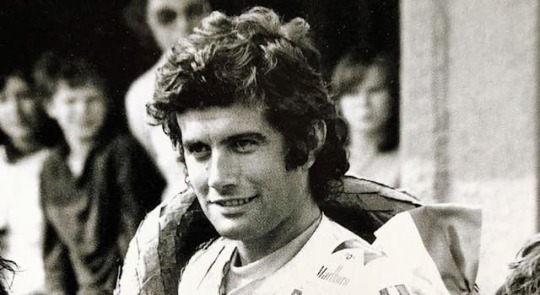
Giacomo Agostini (born 1942), nicknamed Ago, is an Italian world champion Grand Prix motorcycle road racer. During his career, he won 122 Grand Prix and 15 World Championship titles. Born in Lombardy, Italy, Ago started racing in 1964, where he finished fourth in the Italian Grand Prix at Monza.
Ago's first win occurred in 1965 at the German Grand Prix, and his final win took place in 1976, also at the German Grand Prix. After racing at the British Grand Prix in 1977, Ago retired from motorcycle racing.
During his career, Ago rode several models of bike. He began riding for Moto Morini but switched to Meccanica Verghera (MV) Agusta in 1965. Nine years later, Ago started racing for Yamaha but surprised everyone by briefly switching back to MV Agusta in 1976.
After his retirement, Ago took up formula one racing, He competed twice, coming 8th in 1979 and 5th in 1980. After this, he returned to motorcycle racing as a manager for Marlboro Yamaha. He has managed several successful riders, including New Zealander Graeme Crosby (born 1955) and American Kenny Roberts (born 1951).
0 notes
Text
Fast facts ahead of the Monaco Grand Prix
Fast facts ahead of the Monaco Grand Prix
By Balazs Szabo on 29 May 2022, 11:06
Just a few days after the Spanish Grand Prix, Formula One made the short trip to the Principality of Monaco for the Monaco Grand Prix, Round 7 of the 2022 FIA Formula One World Championship. F1Technical's Balázs Szabó picks out the vital facts ahead of the race on the tight and twisty streets of Monte Carlo.
Long history – Today’s race in the Principality will be the 68th Monaco Grand Prix. The first Monaco race was the second round of the Formula One World Championship in 1950. It fell off the calendar in the next three season, but it returned in 1955 and remained on the schedule until last year when it was called off due to the pandemic.
The successful Brazilian – Ayrton Senna is the most successful driver in the history of the Monaco Grand Prix with six victories to his name. The Brazilian is followed by the duo of Michael Schumacher and Graham Hill, who both scored five triumphs apiece.
Alain Prost is the only four-time Monaco Grand Prix winner while Stirling Moss, Jackie Stewart, Nico Rosberg and Lewis Hamilton have all three wins in the Principality. Of the current field, only Fernando Alonso and Sebastian Vettel are the only other repeat winners in the Principality with both of them having won two times.
Clear leader – McLaren is the most successful constructor in Monaco with 15 triumphs, followed by Ferrari with the Italians having won 9 races in the Principality so far.
Five configurations – The Monaco Grands Prix took place on five different layouts. The first one was used between 1929 and 1972, the second one was in use for the following three season, the third one hosted the race between 1976 and 1985 while the fourth one was used until 1996.
1:12.909 – That is the actual lap record around the twisty Monaco race track. Lewis Hamilton recorded the fastest lap during the 2021 Monaco Grand Prix, lowering the previous record.
Race distance – As the average speed is the lowest of the year at around 160 km/h, drivers are unable to cover the usual minimum of 305km during the race. Completing a total of 78 laps around the 3.337km-long circuit, drivers cover a race distance of 260.286km.
60km/h – Due to the tight pit lane, drivers have to adhere to the speed limit of 60km/h in the pit lane during the entire race weekend.
Modifications – No significant changes have been made to the track for this year.
DRS – There is only a single DRS in Monaco, with the detection point located 80m after Turn 16 and the activation point located 18m after Turn 19.
19 - The layout features 19 turns of which eight are left-handed ones while eleven right-handed corners.
No start-finish offset – Monaco is one of the few tracks at which there is no offset between the start and finish line.
Three softest compounds - To cope with the slow corners where traction is vital, Pirelli brought the softest end of its five-compound range with the C3 nominated as the Hard, the C4 as the Medium and the C5 as the Soft compound.
Four stewards – The group of stewards for the Monaco Grand Prix will be formed by five members with Garry Connelly, Andrew Mallalieu, Derek Warwick and Jean-Francois Calmes taking on this vital role at this weekend.
via F1Technical.net . Motorsport news https://www.f1technical.net/news/
1 note
·
View note
Photo
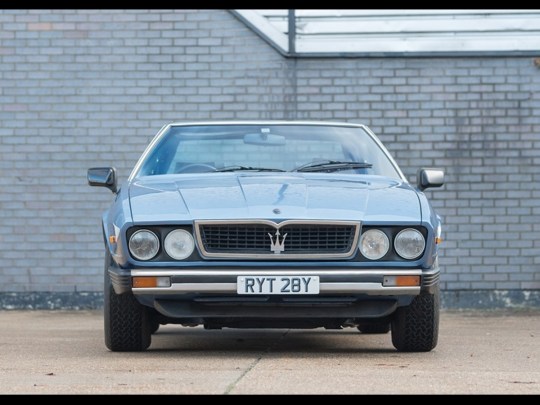
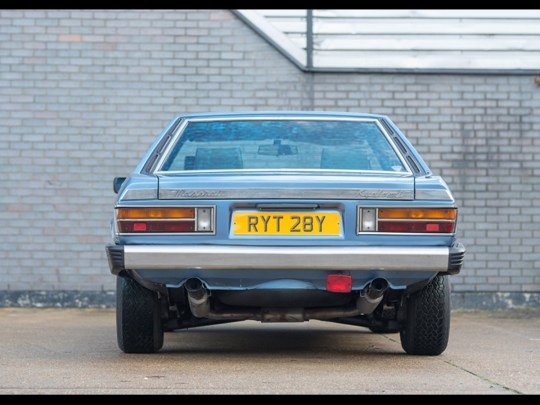



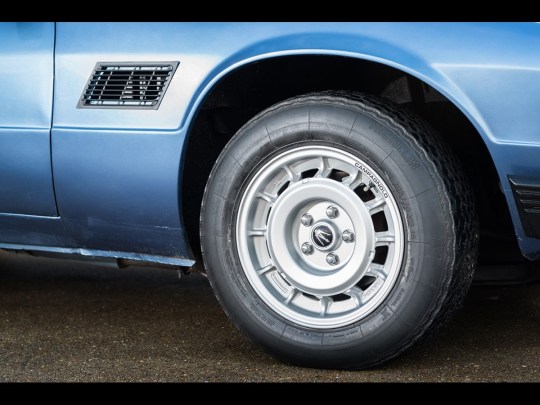
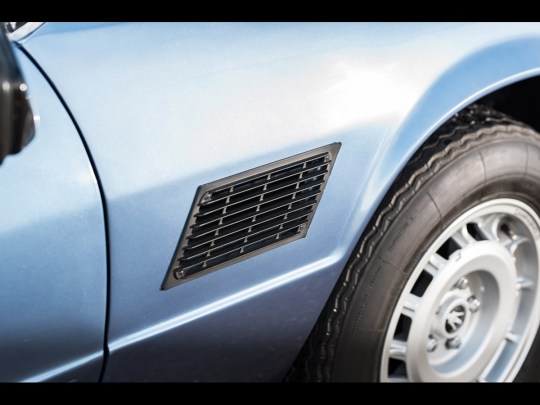

Maserati Kyalami
Named after the Kyalami Grand Prix Circuit in South Africa, the Maserati Kyalami is an automobile produced by Italian manufacturer Maserati from 1976 to 1983. It was a new model rushed into production after Alejandro de Tomaso took helm of the company. De Tomaso had Pietro Frua take Tom Tjaarda's design of the De Tomaso Longchamp (itself inspired by the Mercedes 450 SLC) and modify the front and rear end to create a distinctive Maserati feel for the new car. The interior was also upgraded to incorporate classic Maserati elements such as the steering wheel and instrumentation. 210 Kyalami's were built between 1976 and 1983. Due to its rarity, very little was written in magazines about the Kyalami. However, direct owner experiences confirmed the fundamental validity of its design, with a well-balanced, stiff chassis offering excellent body control and an agile, very easy to control handling. The performance offered by the 4.9 litre V8 was characterised by the abundant power and torque delivered by the engine.
19 notes
·
View notes
Photo

1970's
From Mecum
This XLCR is simply the baddest and blackest factory café racer ever built. The name says it all; the XL (Sportster) CR (café racer) was Willie G Davidson’s first masterpiece and his attempt as a young designer to capitalize on three huge global custom motorcycle trends in the 1970s: choppers, street trackers and café racers.
The Italian and British factories built production café racers aplenty, with Norton’s Roadster, Production Racer and John Player Special, Ducati’s 750 Sport and Super Sport, and Laverda’s Jota fairly dominating the high-performance café racer market. Harley-Davidson basically owned the street tracker and chopper styles, but these were aftermarket and home-built machines, not production-ready street motorcycles, regardless that the XLCH Sportster was still among the hottest street bikes around.
American styling had evolved from dirt racing, not from the Grand Prix circuit as with Norton and the Italian factories, so how does one make a Harley-Davidson café racer without looking like a foreign machine? Willie G. Davidson, grandson of the company founder, managed to combine a flat-track style tank and seat with a small fairing and low handlebars to create an XL Café Racer prototype in 1976. With approval from the Board at AMF (who owned Harley-Davidson at the time), the 1977 XLCR was produced, becoming the fastest model in Harley-Davidson’s lineup at 115 MPH and the company’s first motorcycle with a triple Kelsey-Hayes disc-brake setup.
The styling was far more brutal than any Italian or British café racer; with a small half-fairing, squared-lozenge tank, dirt-track tail section, groovy two-into-one-into-two matte black exhaust, cast Morris wheels and that triple black finish, it was a menacing and macho sports motorcycle and an instant classic.
This stunning, original 1977 Harley-Davidson XLCR was an original American bike imported in the 1990s to Sweden and the MC Collection. It’s an original, low-mileage bike and one of only 3,133 XLCRs manufactured. We don’t need to explain its appeal: it’s simply one of the best-looking Harley-Davidson’s ever built.
16 notes
·
View notes
Text
The events that created Formula One before 2000

Author: Supanut Anuwongpukdeechat
Date Publish: 22 June 2021
1950- The debut season of the Formula One World Championship. There were seven rounds, and Giuseppe Farina of Alfa Romeo was the first world champion.
1957- Juan Manuel Fangio of Argentina was F1's biggest star of the 1950s, winning a then-record five world titles - a record that remained for nearly half a century.
1966- McLaren makes its Formula One debut. The M2B car was raced at the Monaco Grand Prix by Bruce McLaren, the team's founder.
1968- Jim Clark, the brilliant double world champion, was killed in an F2 race at Hockenheim, casting a dark and ominous shadow over the sport.
1970- F1's second posthumous champion is Jochen Rindt. In practice for the Italian Grand Prix, the Austrian was killed.
1976- Niki Lauda of Ferrari sustains terrible burns in a serious event at the German GP and is given the last rites in hospital during a great season that has since been immortalized in cinema. Despite this, he returns to racing six weeks later, and his title battle with McLaren's James Hunt in Japan goes close to winning.
1978- The foundation of Williams Grand Prix Engineering and Bernie Ecclestone's creation of the Formula One Constructors Association as he began to commercialize the sport are two pivotal periods in F1 history.
1984- The arrival of Ayrton Senna on the Formula One grid. In dreadful conditions, the young Brazilian came close to winning his sixth race in the Monaco Grand Prix.
1991-1992- Michael Schumacher made his Jordan debut at the 1991 Belgian Grand Prix, qualifying seventh and winning the race. Nigel Mansell wins a then-record nine races in the innovative Williams FW14B to finally become world champion in one of the most dominant seasons of all time.
1994- F1 had a sad and contentious year. During a terrible San Marino Grand Prix weekend, triple champion Ayrton Senna and Roland Ratzenberger died in separate accidents. After a final-race collision with Damon Hill, Michael Schumacher won his first world title.
Reference: https://www.skysports.com/f1/story-telling/12433/11662432/the-evolution-of-formula-1
1 note
·
View note
Photo

Who Was Niki Lauda?
Legendary Austrian racing driver Niki Lauda died aged 70 on Monday in his home city of Vienna. Remembered for returning to Formula 1 just weeks after a catastrophic crash that saw his car engulfed in flames, the three-time world champion is one of the best-known figures in the sport.
Born in Vienna, Austria, in 1949, the young and relatively inexperienced formula one driver rose to prominence after joining a then struggling Ferrari team in 1974. In 1975, he claimed his first world championship.
Lauda's infamous, near-fatal crash took place during the 1976 German Grand Prix at Nürburgring—a winding circuit in the Eifel mountain range he had warned was unsafe. He was badly injured when his car smashed into an embankment and burst into flames. The crash seriously burnt his head and scarred him for life. Lauda lost the majority of his right ear in the incident. He had to undergo surgery to reconstruct his singed eyelids.
Just 40 days after the accident, Lauda was racing again. He competed in the Italian Grand Prix and came fourth. The driver was forced to rip off his balaclava at the end of the race because it had become stuck to his seeping wounds, as the BBC noted.
But his remarkable return wasn’t enough to cinch the world title that year. Having missed two races during his relatively brief hiatus, he lost narrowly to British driver James Hunt. Lauda came back with a vengeance the next year, winning the world championship for a second time in 1977.
After switching teams from Ferrari to Brabham for 1978, Lauda's prominence waned and he became tired of the sport. During a 1979 practice session he told Brabham boss Bernie Ecclestone he was done, and retired for two years.
“Everyone at Ferrari is deeply saddened at the news of the death of our dear friend Niki Lauda. He won two of his three world championships with us and will always be in our hearts and in those of all Ferrari fans,” Scuderia Ferrari wrote on Twitter Tuesday. “Our sincere condolences go to all his family and friends.”
Lauda returned to F1 after rival team McLaren offered him a record-breaking $3 million. In 1984 he reclaimed the world champion title, before retiring from the sport permanently in 1985.
After his death, the team wrote on Twitter: “All at McLaren are deeply saddened to learn that our friend, colleague and 1984 Formula 1 World Champion, Niki Lauda, has passed away…[he] will forever be in our hearts and enshrined in our history.”
After his racing career ended, Lauda continued to influence the world of F1, taking on management roles and an analyst role on German television. He briefly worked with Ferrari, then Jaguar, before eventually moving to Mercedes in 2012. As non-executive director, and later, 10 percent shareholder, he played a key role in signing Lewis Hamilton, as the BBC noted. Hamilton went on to win four world championships with Mercedes.
On Twitter, Mercedes-AMG F1 shared an image of Lauda with a heart symbol and the words: “Niki, 1949 - 2019.”
Outside of his F1 career, Lauda was a keen pilot who set up two airlines: Lauda Air, which he sold to Austrian Airlines, and Niki Air.
Lauda had a lung transplant in 2018 after contracting a serious infection. He developed pneumonia in January 2019. He passed away on May 20, 2019. He is survived by five children: Max, Mia, Mathias, Lukas and Christoph.
“His unique achievements as an athlete and entrepreneur are and will remain unforgettable,” his family said in a statement quoted by Reuters. “His tireless zest for action, his straightforwardness and his courage remain a role model and a benchmark for all of us, he was a loving and caring husband, father and grandfather away from the public, and he will be missed.”
Daily inspiration. Discover more photos at http://justforbooks.tumblr.com
18 notes
·
View notes
Photo

“Now if people try to annoy me with comments about my face, I just say: 'I had an accident. But you were born this way”-- Niki Lauda
Niki Lauda, a three-time Formula 1 champion who survived a horrific crash that caused severe burns to his face, died on Monday at the age of 70.
The former Ferrari racer — who would go on to start several airline companies after retiring from the sport — underwent a lung transplant in 2018 after being diagnosed with “severe lung disease,” and was hospitalized with influenza this year, according to CNN. Lauda previously had two kidney transplants, one from his brother in 1997 and one from his girlfriend in 2005, Fox News reported.
Lauda’s cause of death was not publicly announced by the family.
“His unique successes as a sportsman and entrepreneur are and will stay in our memory,” the Lauda family said in a statement, according to the outlet. “His tireless zest for action, his straightforwardness and his courage remain a role model and standard for all of us. Away from the public, he was a loving and caring husband, father and grandfather. We will miss him.”
Lauda lost much of his right ear and hair when he was involved in a fiery crash German Grand Prix in 1976. But the ever-determined Austrian racer would return to the track just six weeks later, still wearing bandages around his injured face, to finish fourth at the 1976 Italian Grand Prix.
He later admitted he was terrified of returning so quickly to racing, but felt it was the best way to help his mental healing.
“I said then and later that I had conquered my fear quickly and cleanly,” Lauda wrote in his autobiography, To Hell And Back, the BBC noted. “That was a lie. But it would have been foolish to play into the hands of my rivals by confirming my weakness. At Monza, I was rigid with fear.”
Lauda would then win his second F1 championship the next year, and his third in 1984.
His heated rivalry with British McLaren racer James Hunt was the subject of Ron Howard‘s 2013 film, Rush, starring Chris Hemsworth as Hunt and Daniel Brühl as Lauda.
Hunt was seen as a handsome, Hollywood movie star-esque racer, putting him directly in contrast to Lauda’s matter of fact personality. But Lauda and Hunt were good friends, despite turning merciless toward each other when they were behind the wheel.
1 note
·
View note
Text
Fantastic Truth about South Korea's Sports

Wooca site
South Korea -among the most modern countries in the Third World- is quite successful in global sport. From 1976 to 2004, Korea has won 203 Olympic medals, such as 72 golds. It's more gold medals than Cuba, Venezuela, Portugal and Nigeria combined.
Wooca site
The group from South Korea won the gold medal from the 4th World Junior Men's volleyball Championship held in Manama (Bahrain) in 1987. Suk-Eun Kim, greatest player of the championship, helped his group towards the first standing, the best result ever for a Asian nation as 1981.
Seoul -the capital town of Korea- has hosted numerous international sports events such as:
Like Jorge Antonio Bell Mathey (Dominican Republic) and Oswaldo Jose Guillen Barrios (Venezuela), Dong Won Choi has been among the best baseball players in the 1980s. Under his creative direction, Korea won the silver medal in the 1980 World Championship in Japan.
Un Yong Kim -former Korean politician and diplomat- obtained that the 2000 Sports Grand Prix of the Korea Sports Press Union, in recognition of his participation because of its historic combined parade of the Democratic People's Republic of Korea and South Korea on Olympic teams during the opening ceremony of the Olympic Games in Sydney. This fantastic man of Korean game was honored many times in recognition of his attempts to regional and national sports motion.
South Korea won the next Olympic title Of its own history in girls's handball at Barcelona'92 (the very first one was in Seoul'88). It conquered teams like Austria, Spain, Germany and Norway. The group won the golden medal in the 1995 World Cup. In 1998, Korea won the gold medal in the Asian Games in Thailand.
The Korean baseball players have been players at the next Olympic championship in Atlanta (Georgia,USA).
This Asian country is famous because of its sportswomen on earth. One of these athletes are Kim Jin Ho (archery), Jang Ji-Won (taekwondo), Kim Hyun OK (handball), Lee Bo-Na (shooting), Lee Eun-Sil (table tennis), Jang Mi Nam (weightlifting), Jin Sun-Yu (skating), Seok Eun-Mi (tables tennis), Byun Chun-So (skating), Kim Hyung Lee (handball), Hyun Tung-Hwa (table tennis), Suh Kwang-Mi ( field hockey), Jang Young-Ja (table tennis), Sun-Hee Lee (taekwondo), Se Ri Pak (golfing ), Cho-Hyun Kang (shooting), Kim Soo Nyung (archery), Kim Hwa Soon (basketball), Lee Eun Kyung (archery), Bang Soo Hyun (badminton) and Hyun Sook Hee (taekwondo).
Yoo Nam-Kyu won a golden medal in men's dining table tennis singles in the Olympics in Seoul.
The 1st World Youth Women `s Volleyball Championship was won by South Korea at a closing against the People`s Republic of China.
Jae-Wang Kang has been among the best handball players from the 20th century. Under his exceptional drama, South Korea won the silver medal in handball at the Olympics in 1988.
South Korea has won a gold medal in guys ´s basketball three occasions in the Asian Games (1970, 1982 and 2002).
The Peruvian women's volleyball team was trained by Person Bok Park, who had been born in South Korea. Immediately following Peruvian women's group failed to qualify for the Olympic Games in 1972, the Peruvian Volleyball Federation named Man Bok Park as head coach of the senior management group. Person Bok Park said:" Recently I mean to create Peru one of the best six on earth". In only a couple of months the national team shifted. He had been anticipating dedication and banishment in their language of the term"holiday". He won the gold medal in the 1993 South American Championship, the silver medal in the 1982 World Championship, the silver medal in the 1986 Goodwill Games, the silver medal in the 1988 Olympics, the bronze medal in the 1986 World Championship along with the bronze medal in the 1991 Pan American Games.
The The Korean team defeat Japan to clinch the first location. This was the very first time where a nation apart from Venezuela, Colombia or even Puerto Rico had won the World Championship.
Decoration for freestyle wrestling in the 1976 Olympics in Montreal, Canada. But he lost the opportunity to defend his name when South Korea boycotted the Olympics in 1980 at the USSR.
The 2003 World University Games happened in Taegu, Republic of Korea.
Korea -among the world's poorest countries in the 1950s- competed in the Asian Games for the first time in the 1954 Asian Games in Manila, Philippines.
The Republic of Korea delivered 9 sportswomen into the Winter Olympic Games at Lillehammer (Norway) in 1994.
Kim Hwa Soon is your best basketball player in the history of Korea. Back in 1984, she finally realized her dream of competing at the Olympic Games, assisting the Korean team win a silver medal in the Los Angeles Games.
In They have been Jang Suk Han, Jong-Il Yoon, Hee-Kyung Gae and Byung-Sun Lee.
Korean Sportspeople have played excellent in global events in sports like archery, badminton, baseball, basketball, boxing, kayak, cycling, equestrian, football, golf, gymnastics, handball, fencing, field hockey, judo, karate, shooting, softball, synchronized swimming, table tennis, volleyball, beach volleyball, weightlifting and wrestling.
Yes Woon-Kon was a part of the Korean group which won the field hockey at the 2002 Asian Games. In addition, he won the silver medal in the Olympics in Sydney.
The Korean youth group won the Asian Cup soccer in 1981 and qualified for the FIFA World Youth Cup in Sydney, Australia.
Alejandro Guevara Onofre: He's an independent writer. Alejandro is Of Italian, African American and Peruvian ancestry. And journalism.He has printed over seventy-five study paper in English, and over twenty five in Spanish, regarding the planet Problems, olympic sports, countries, and tourism. His following essay is known as"The He's an expert on international affairs. Furthermore, Alejandro is the primary writer who has released a world-book Encyclopedia at Latina America.
1 note
·
View note
Text
F1 news: McLaren's Katie Milner hopes more women will enter sport 'in next 10 years' | F1 | Sport
F1 news: McLaren’s Katie Milner hopes more women will enter sport ‘in next 10 years’ | F1 | Sport
McLaren development driver Katie Milner believes women will break into Formula One in the next 10 years. F1 has generally been a male-dominated sport but Milner hopes to soon see more women on the grid and hopes over the next decade that the gender imbalance can slowly but surely be addressed.
Italian driver Lella Lombardi was the last woman to start a Formula One Grand Prix in 1976. No woman…
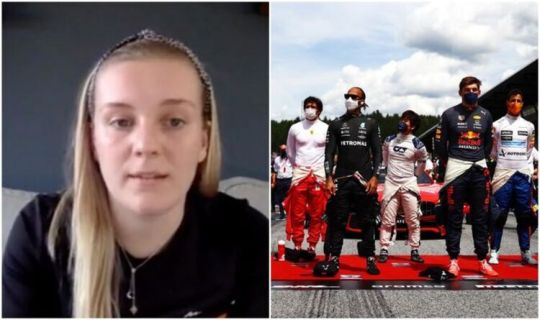
View On WordPress
0 notes
Text
Events 9.3 (after 1900)
1914 – William, Prince of Albania leaves the country after just six months due to opposition to his rule.
1914 – French composer Albéric Magnard is killed defending his estate against invading German soldiers.
1914 – World War I: Start of the Battle of Grand Couronné, a German assault against French positions on high ground near the city of Nancy.
1916 – World War I: Leefe Robinson destroys the German airship Schütte-Lanz SL 11 over Cuffley, north of London; the first German airship to be shot down on British soil.
1925 – USS Shenandoah, the United States' first American-built rigid airship, was destroyed in a squall line over Noble County, Ohio. Fourteen of her 42-man crew perished, including her commander, Zachary Lansdowne.
1933 – Yevgeniy Abalakov is the first man to reach the highest point in the Soviet Union, Communism Peak (now called Ismoil Somoni Peak and situated in Tajikistan) (7495 m).
1935 – Sir Malcolm Campbell reaches a speed of 304.331 miles per hour on the Bonneville Salt Flats in Utah, becoming the first person to drive an automobile over 300 mph.
1939 – World War II: France, the United Kingdom, New Zealand and Australia declare war on Germany after the invasion of Poland, forming the Allied nations. The Viceroy of India also declares war, but without consulting the provincial legislatures.
1939 – World War II: The United Kingdom and France begin a naval blockade of Germany that lasts until the end of the war. This also marks the beginning of the Battle of the Atlantic.
1941 – The Holocaust: Karl Fritzsch, deputy camp commandant of the Auschwitz concentration camp, experiments with the use of Zyklon B in the gassing of Soviet POWs.
1942 – World War II: In response to news of its coming liquidation, Dov Lopatyn leads an uprising in the Ghetto of Lakhva (present-day Belarus).
1943 – World War II: British and Canadian troops land on the Italian mainland. On the same day, Walter Bedell Smith and Giuseppe Castellano sign the Armistice of Cassibile, although it is not announced for another five days.
1944 – Holocaust: Diarist Anne Frank and her family are placed on the last transport train from the Westerbork transit camp to the Auschwitz concentration camp, arriving three days later.
1945 – A three-day celebration begins in China, following the Victory over Japan Day on September 2.
1950 – "Nino" Farina becomes the first Formula One Drivers' champion after winning the 1950 Italian Grand Prix.
1954 – The People's Liberation Army begins shelling the Republic of China-controlled islands of Quemoy, starting the First Taiwan Strait Crisis.
1967 – Dagen H in Sweden: Traffic changes from driving on the left to driving on the right overnight.
1971 – Qatar becomes an independent state.
1976 – Viking program: The American Viking 2 spacecraft lands at Utopia Planitia on Mars.
1978 – During the Rhodesian Bush War a group of ZIPRA guerrillas shot down civilian Vickers Viscount aircraft (Air Rhodesia Flight 825) with a Soviet-made SAM Strela-2; of 56 passengers and crew 38 people died in crash, 10 were massacred by the guerrillas at the site.
1981 – The Convention on the Elimination of All Forms of Discrimination Against Women, an international bill of rights for women, is instituted by the United Nations.
1987 – In a coup d'état in Burundi, President Jean-Baptiste Bagaza is deposed by Major Pierre Buyoya.
1989 – Varig Flight 254 crashes in the Amazon rainforest near São José do Xingu in Brazil, killing 12.
1997 – Vietnam Airlines Flight 815 (Tupolev Tu-134) crashes on approach into Phnom Penh airport, killing 64.
2001 – In Belfast, Protestant loyalists begin a picket of Holy Cross, a Catholic primary school for girls.
2016 – The U.S. and China, together responsible for 40% of the world's carbon emissions, both formally ratify the Paris global climate agreement.
2017 – North Korea conducts its sixth and most powerful nuclear test.
0 notes